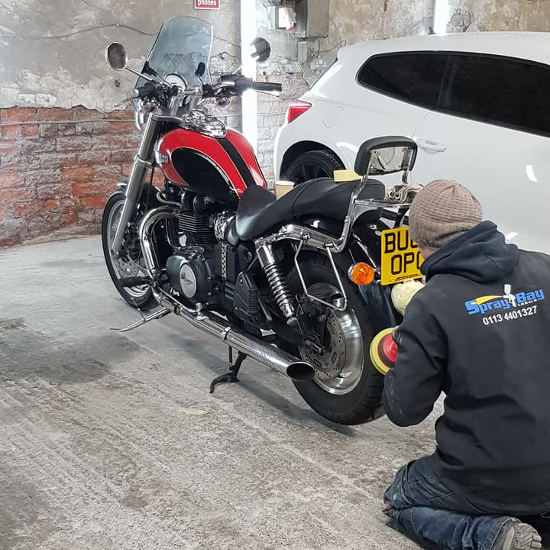
15 May Top tips for Motorbike Paint Repair
Most riders love their motorbike because it gives them a welcome escape from the hustle and bustle of everyday life. For others, a motorbike is simply a mode of transport and a way to beat the traffic in the morning.
Whichever side of the road you’re on, one thing is for certain: when it comes to repairing your motorbike, no expense should be spared to do it right. Half jobs just aren’t worth it, are they? And this applies specially to paint repairs.
To help you ensure your motorbike paint repair is up to scratch, here are some top tips from our team. If you have any questions, contact us.
Paint quality
Good paint jobs call for good quality paint. The pros use high quality automotive paints – paints of the same grade manufacturers use at the factory. We mix our own paints which in our tests outperform leading brands.
The differences between a budget paint and a premium paint are as so: high quality paints have fewer solvents (water) per gallon and they have better pigments. Few solvents means the paint is thicker. Better pigments mean the finish is purer. The most important pigment in paint is titanium oxide. A higher titanium oxide content generally means a higher quality paint. Our paints have a lot of titanium oxide.
Colour match
The paint should be matched to the original colour to the highest accuracy. Even a 1% variance in colour sticks out like a sore thumb. This is exasperated by natural light, which is why it’s easier to see defects outside than indoors.
We can’t speak for all motorbike repairers, but we mix all our own paints in-house. We don’t buy in pre-mixed paints because in our experience, they do not offer the same accurate colour match we can do ourselves. We have no doubt branded paints are great, but we know ours are brilliant.
Prep work
Good prep work should never be taken for granted. Surfaces need sanding and priming before they can be painted – and this goes for all surfaces, metal or plastic. It is also sometimes necessary to use automotive filler.
By preparing a surface properly, you give the paint a good surface to adhere to. Any imperfections can cause the paint to bubble, ripple or pull up. You can also find the paint job appears uneven, or wobbly, in certain light.
Fillers and adhesives
If fillers are required to prep a bike for painting, then whether the repair calls for plastic filler, flexible filler, metal filler or fibreglass filler, the product itself should be of a high quality. We use fillers from the likes of Mipa, Indasa and Würth because we know they offer the performance and ease of application we need.
If adhesives are called for, such as to stick trim to the bike, this should be approached with the view to creating a permanent bond. We use 3M adhesives and U-POL adhesives, among other reputable brands, to ensure good adhesion.
Get a guarantee
Lastly, make sure you always get a guarantee on the repair work. The last thing you want is for the paint to peel away or go dodgy after a year.
The guarantee should be insurance-backed and ideally cover you for the length of time you’ll keep hold of the bike. In our case, we guarantee motorbike paint repairs for a period of five years. Most body shops only go up to a few years. The longer the better. But remember – the guarantee is for materials and workmanship only. It isn’t going to help you if you damage your bike again.

No Comments